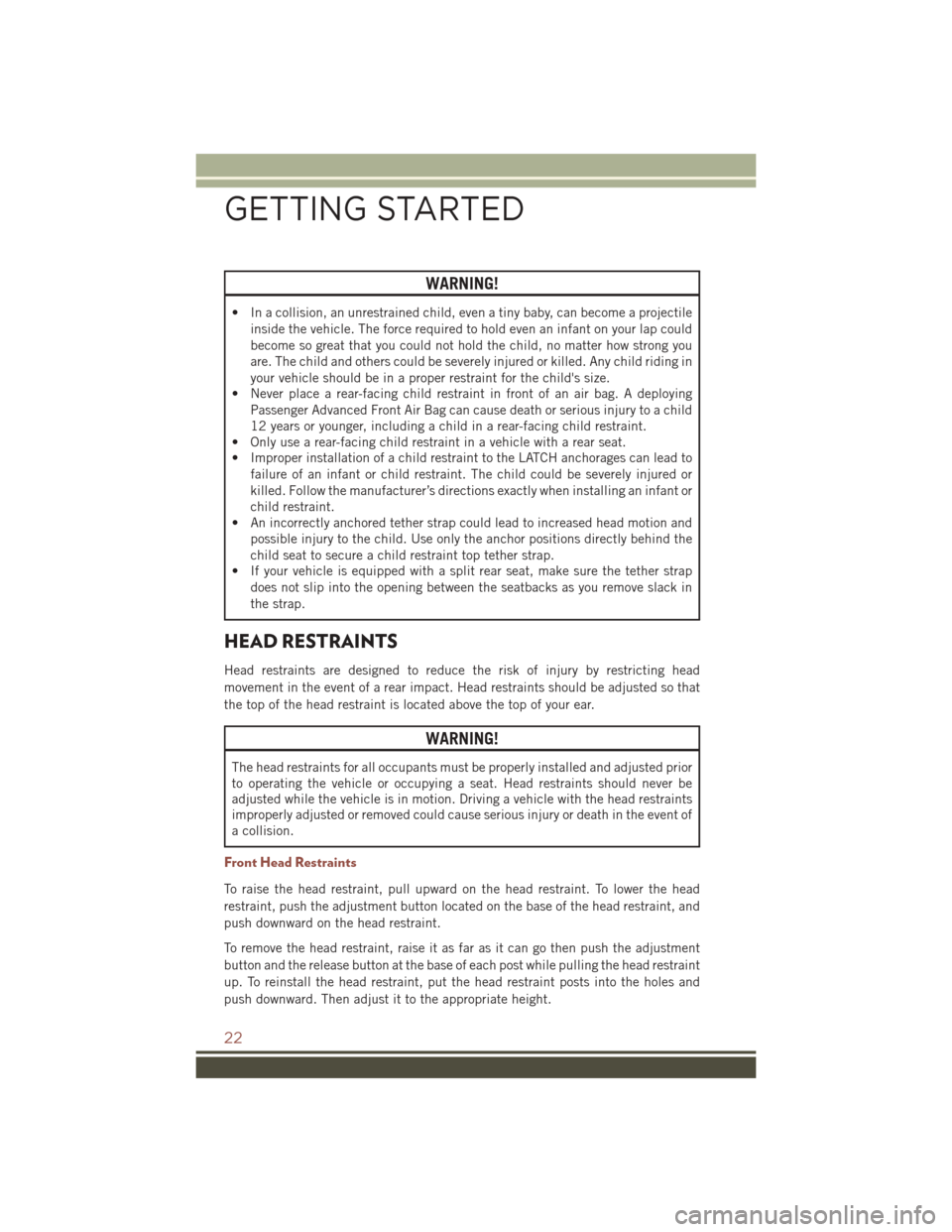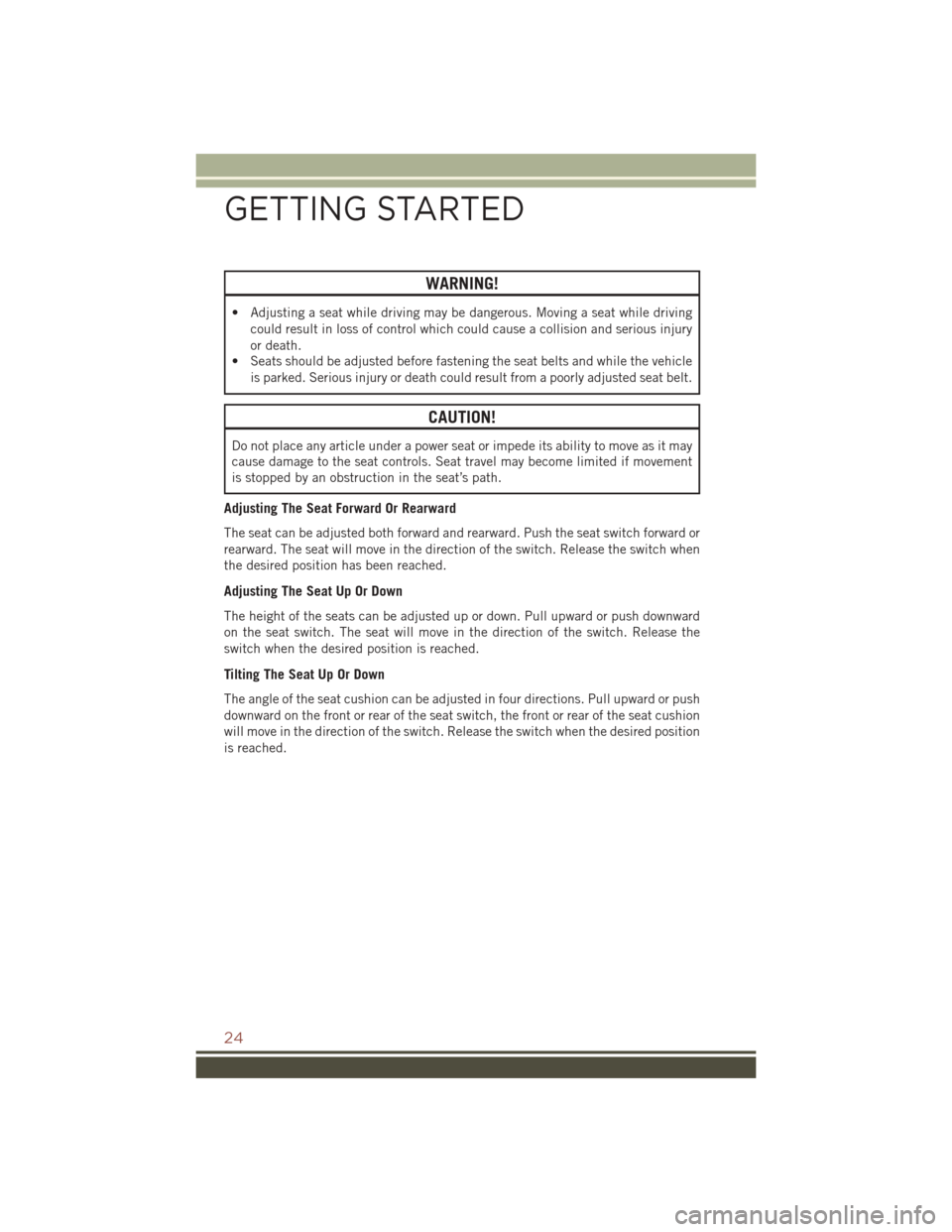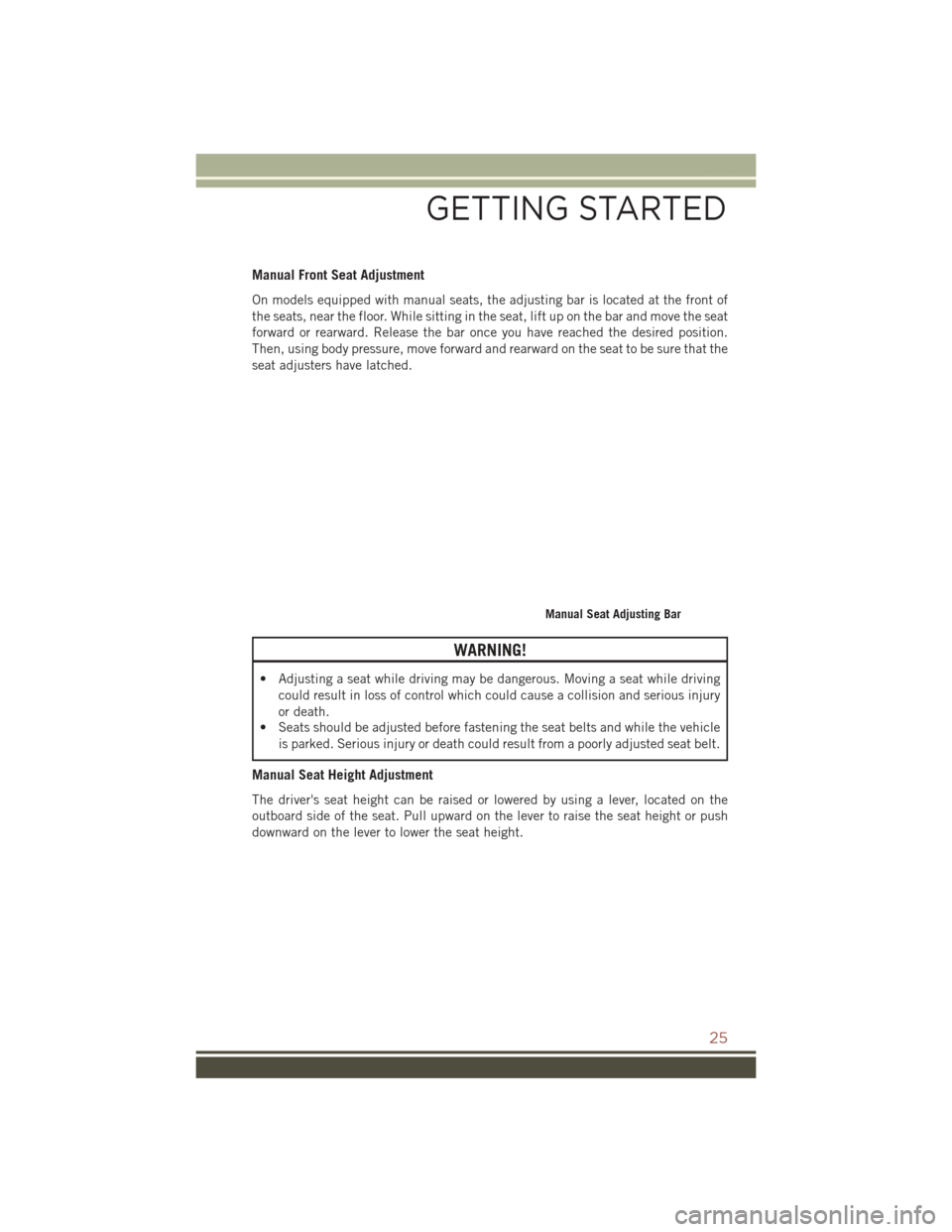height JEEP COMPASS 2016 1.G User Guide
[x] Cancel search | Manufacturer: JEEP, Model Year: 2016, Model line: COMPASS, Model: JEEP COMPASS 2016 1.GPages: 148, PDF Size: 8.42 MB
Page 24 of 148

WARNING!
• In a collision, an unrestrained child, even a tiny baby, can become a projectileinside the vehicle. The force required to hold even an infant on your lap could
become so great that you could not hold the child, no matter how strong you
are. The child and others could be severely injured or killed. Any child riding in
your vehicle should be in a proper restraint for the child's size.
• Never place a rear-facing child restraint in front of an air bag. A deploying
Passenger Advanced Front Air Bag can cause death or serious injury to a child
12 years or younger, including a child in a rear-facing child restraint.
• Only use a rear-facing child restraint in a vehicle with a rear seat.
• Improper installation of a child restraint to the LATCH anchorages can lead to
failure of an infant or child restraint. The child could be severely injured or
killed. Follow the manufacturer’s directions exactly when installing an infant or
child restraint.
• An incorrectly anchored tether strap could lead to increased head motion and
possible injury to the child. Use only the anchor positions directly behind the
child seat to secure a child restraint top tether strap.
• If your vehicle is equipped with a split rear seat, make sure the tether strap
does not slip into the opening between the seatbacks as you remove slack in
the strap.
HEAD RESTRAINTS
Head restraints are designed to reduce the risk of injury by restricting head
movement in the event of a rear impact. Head restraints should be adjusted so that
the top of the head restraint is located above the top of your ear.
WARNING!
The head restraints for all occupants must be properly installed and adjusted prior
to operating the vehicle or occupying a seat. Head restraints should never be
adjusted while the vehicle is in motion. Driving a vehicle with the head restraints
improperly adjusted or removed could cause serious injury or death in the event of
a collision.
Front Head Restraints
To raise the head restraint, pull upward on the head restraint. To lower the head
restraint, push the adjustment button located on the base of the head restraint, and
push downward on the head restraint.
To remove the head restraint, raise it as far as it can go then push the adjustment
button and the release button at the base of each post while pulling the head restraint
up. To reinstall the head restraint, put the head restraint posts into the holes and
push downward. Then adjust it to the appropriate height.
GETTING STARTED
22
Page 26 of 148

WARNING!
• Adjusting a seat while driving may be dangerous. Moving a seat while drivingcould result in loss of control which could cause a collision and serious injury
or death.
• Seats should be adjusted before fastening the seat belts and while the vehicle
is parked. Serious injury or death could result from a poorly adjusted seat belt.
CAUTION!
Do not place any article under a power seat or impede its ability to move as it may
cause damage to the seat controls. Seat travel may become limited if movement
is stopped by an obstruction in the seat’s path.
Adjusting The Seat Forward Or Rearward
The seat can be adjusted both forward and rearward. Push the seat switch forward or
rearward. The seat will move in the direction of the switch. Release the switch when
the desired position has been reached.
Adjusting The Seat Up Or Down
The height of the seats can be adjusted up or down. Pull upward or push downward
on the seat switch. The seat will move in the direction of the switch. Release the
switch when the desired position is reached.
Tilting The Seat Up Or Down
The angle of the seat cushion can be adjusted in four directions. Pull upward or push
downward on the front or rear of the seat switch, the front or rear of the seat cushion
will move in the direction of the switch. Release the switch when the desired position
is reached.
GETTING STARTED
24
Page 27 of 148

Manual Front Seat Adjustment
On models equipped with manual seats, the adjusting bar is located at the front of
the seats, near the floor. While sitting in the seat, lift up on the bar and move the seat
forward or rearward. Release the bar once you have reached the desired position.
Then, using body pressure, move forward and rearward on the seat to be sure that the
seat adjusters have latched.
WARNING!
• Adjusting a seat while driving may be dangerous. Moving a seat while drivingcould result in loss of control which could cause a collision and serious injury
or death.
• Seats should be adjusted before fastening the seat belts and while the vehicle
is parked. Serious injury or death could result from a poorly adjusted seat belt.
Manual Seat Height Adjustment
The driver's seat height can be raised or lowered by using a lever, located on the
outboard side of the seat. Pull upward on the lever to raise the seat height or push
downward on the lever to lower the seat height.
Manual Seat Adjusting Bar
GETTING STARTED
25